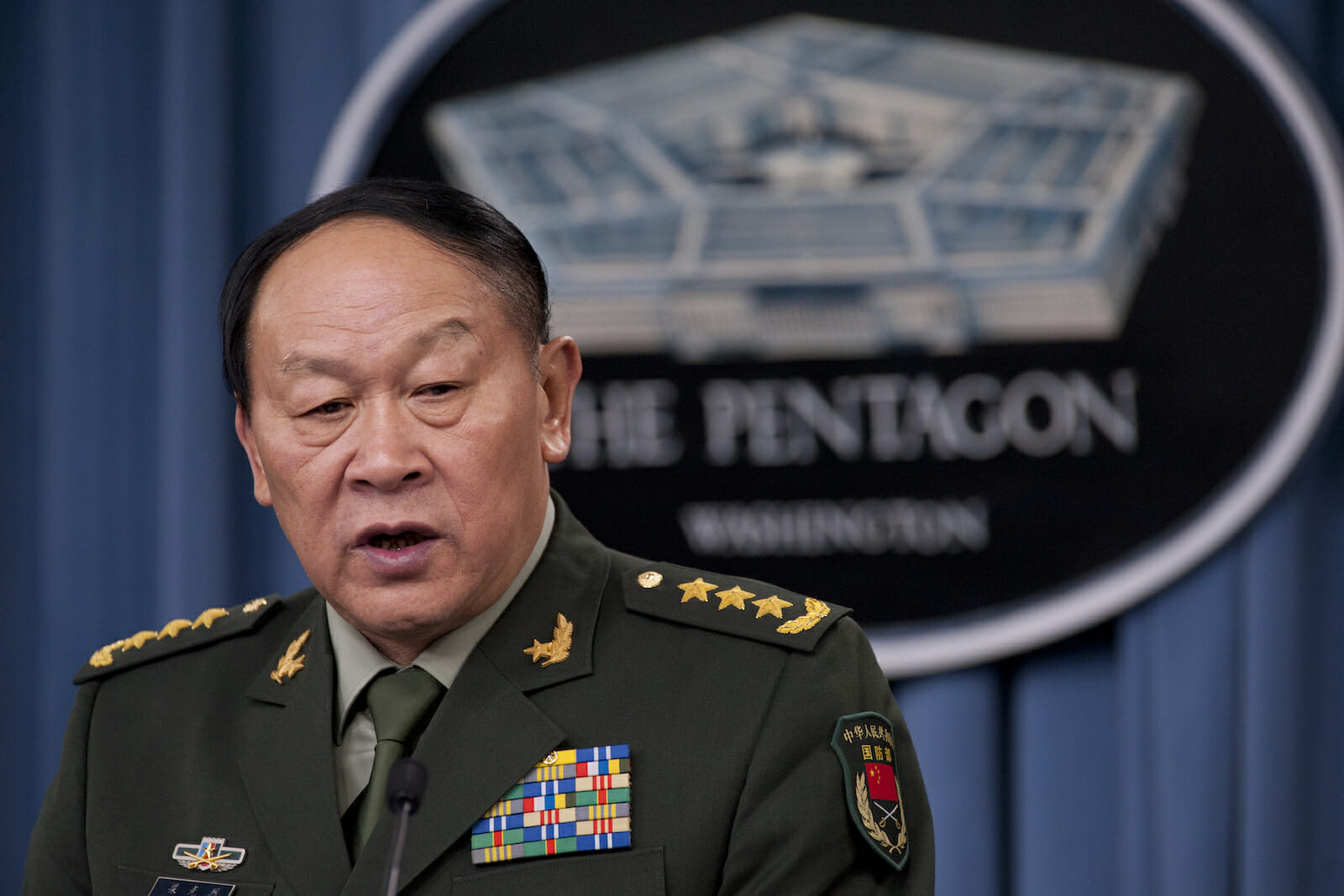
Chinese Cyber Information Profusion
A recent report by Northrop Grumman entitled, “Occupying the Information High Ground: Chinese Capabilities for Computer Network Operations and Cyber Espionage” presented to the U.S. China Economic and Security Review Commission (USCC) falls short of acknowledging that China’s increasingly modernized cyber capabilities are a product and part of its “anti-interventionism” doctrine that, at once, brings together its military, civilian, and economic spheres and creates a buffer and defense projection that affects China’s regional and global power.
The 132-page report is an expansion and update to the 2009 report to the USCC entitled the “Capability of the People’s Republic of China to Conduct Cyber Warfare and Computer Network Exploitation.” The original report details the increasing interconnectivity between China’s military, civilian, and economic spheres, under the framework of an “informationalized” defense centered around an evolving cyber prowess. The new report delves into the same relationship, where China’s economic, military, and civilian spheres perpetually dovetail to achieve strategic and tactical ends.
The 2012 report to the USCC highlights what it calls China’s “information confrontation strategy,” which unifies the command structure of military strategy to span geographic, physical, and virtual domains of conflict. Information confrontation, effectively, cuts off an enemy’s exit using pre-emptive information profusion (played out in a US-China adversarial context in the report).
This “information confrontation,” the “informationized condition” named in the 2009 report, is not new to People’s Liberation Army (PLA) military strategy nor to People’s Republic of China (PLC) doctrine, however. To potentially great consequence, the general acknowledgment of the merging effects of these different spheres does not connect the new findings of China’s cyber prowess with the established macro level and thematically consistent PLA and PLC doctrine of “anti-interventionism.”
China is incessantly at odds with other regional powers, embroiled in territorial and sovereignty disputes in the South China Sea, over the Senkaku Islands, the Spratly Islands, surrounding waters, and natural resources. Amidst its territorial and geographic diplomatic dust-ups, China still continues to develop its military capability with advances in cruise missile development, the emergence of a new Stealth jet, and an aircraft carrier currently undergoing sea trials, all serving to enhance its regional defense projection. The combination of technological advances and vintage doctrines has created a buffer between China, its territories, and other regional powers.
These strategies, using the naval terminology of “anti-access” defined by denying access to opposing forces to become involved in a cross-strait conflict and “area-denial” as capabilities intended to defeat mobile maritime forces are prevented from getting underway. Often used synonymously, anti-access and area-denial (A2 and AD) highlight the operational means of activating China’s doctrine of “anti-interventionism.”
Moreover, China has become a burgeoning manufacturer in telecommunications, software, routers, and other cyber-relevant industries. China’s intentions, however, are strategically dual-purposed. The economic benefit through stimulative job growth and increased GDP facilitates the placation of the domestic political sphere, but the investments in human capital and the base skill-set established, as a result, in the telecommunications industry, for example, serve a purpose aligned with a more comprehensive strategy. The strategy, from tactical to strategic, is to develop dual-purpose industries that provide an amiable front for a possibly malignant infiltration of the basic communications infrastructure, laying the groundwork for an extensive network of cyber capabilities. From there, it is not difficult to imagine the spillover from extensive cyber capabilities to the development of new and upgraded military capabilities.
Furthermore, and with little uncertainty, this “informationization” of the Chinese military, economy, and aspects of the civilian sector through its dual-use and purpose cyber-evolution, is a watered down, politicized version of Information Warfare, and in a holistic sense, is the same as China’s comprehensive regional and geopolitical doctrine of A2-AD, and to larger extent, anti-interventionism. According to the “Science of Military Strategy” published by the Academy of Military Science of People’s Liberation Army, 2005, China should do its best “to fight against the enemy as far away as possible…to lead the war to the enemy’s operational base…and to actively strike all the effective strength forming the enemy’s war system.”
The defense against such tactics that create a multi-dimensional buffer around China and its territories is and will be a regional concern with global implications. Using such a holistic approach and with neighbors increasingly dependent on a Chinese trade, growth overflow, market, and security complex, the buffer adds to an increasingly ambiguous rise. It is difficult to imagine a better way of operating under China’s military doctrine, of fighting enemies as far away as possible and striking the enemy in their own wheelhouse, without drawing the connection between China’s new cyber efforts that prop up a physical army and defense with virtual, informationized weaponry.
The overlooked importance is that integration between all of China’s spheres, overlaid by a cyber evolution, makes it even more difficult for policymakers both from major regional powers like the United States, Japan, South Korea, the Philippines and Australia and unequivocally smaller actors across the spectrum, to choose the correct lens to view, distinguish, and hone appropriate policy to a specific set of priorities.
The oversights in the report leave behind a significant disconnect between China’s comprehensive geopolitical strategy, the relationship between its spheres, and the “so-what” quality of how all of this can influence the US and allied policy decisions regarding an ambiguous rise by a regional and global power. Misrepresenting China’s capabilities and the ambiguity in PLA and PRC intentions by overlooking the parallels between its cyber and geopolitical strategy, undoubtedly, carries with it serious consequences. Without a working forest-through-the-trees, tactical to strategic, cognizance of China’s all-sphere inclusive strategy, regional policymakers may underestimate vital geopolitical shifts with cataclysmic regional and global ramifications


